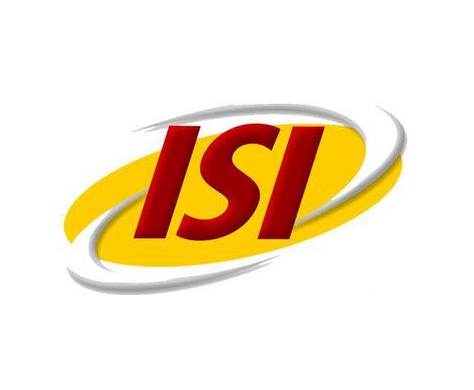عنوان مقاله:
مدیریت زنجیره تامین هوشمند در انقلاب صنعتی چهارم: بررسی، برنامه تحقیق و استراتژی هایی در آمریکای شمالی
Smart supply chain management in Industry 4.0: the review, research agenda and strategies in North America
سال انتشار: 2022
رشته: مدیریت - تحقیق در عملیات - مهندسی صنایع
گرایش: مدیریت صنعتی - لجستیک و زنجیره تامین
دانلود رایگان این مقاله:
دانلود مقاله انقلاب صنعتی چهارم
مشاهده سایر مقالات جدید:
Smart supply chain management under Industry 4.0
A review of the latest literature on ICTs in SC under Industry 4.0 is presented in this section. The literature is categorized into development SC and fulfillment SC, where the former is to establish the supply network and the latter is the supply process to fulfill the customer demand. Table 5 in Appendix summarizes Industry 4.0 related ICTs’ impacts on the different process of development and fulfillment supply chains. Warehouse is one of the most important facilities in SCM, and almost every part of the supply chain is closely related to it. Considering the role of warehouse in a smart supply chain and rapid development in recent years, an additional section, Sect. 6.3, is devoted to review the automated warehouse and the progress of applying new ICT in warehouse management.
Smart supply chain: development and strategic decision
The supply chain development can be supported entirely by new Industry 4.0 technologies. New technologies can enable traditional supply chains to move toward intelligent, connected, efficient and excellent supply chain and operation management (Dallasega et al., 2018). In this section, we discuss the applications of Industry 4.0 technologies to strategy development SCM in three categories: design/new techniques, strategic source, and strategic network.
Design/new techniques
As the most advanced technologies, how to combine Industry 4.0 technologies with SCM is full of challenges. Some new thoughts/principles and techniques will be designed to suit new conditions. Ghobakhloo (2018) summarizes the principles and technology trends adopted strategically for Industry 4.0 technologies in manufacturing industry. For a specific technology, such as 3D printing, Berman (2012) points out that it can change the product designing process. 3D printing breaks the time and space limits in the production process, does not require assembly, and is economical and efficient to design and modify the products. Majeed and Rupasinghe (2017) discuss the operations to manage better and optimize and automate processes in an Enterprise Resource Planning (ERP) system through the use of RFID technology in the fashion apparel and footwear industry. Saberi et al. (2019) identify and categorize four blockchain technology adoption barriers in supply chain operations. They also point out that the blockchain-led SCM still belong to the early stages of development. Manuel Maqueira et al. (2019) reveal cloud computing technology can help the participants in the supply chain to integrate effectively. Additionally, the developing simulation methods can support the supply chain design and operation processes (Gunal & Karatas, 2019).
(دقت کنید که این بخش از متن، با استفاده از گوگل ترنسلیت ترجمه شده و توسط مترجمین سایت ای ترجمه، ترجمه نشده است و صرفا جهت آشنایی شما با متن میباشد.)
مدیریت هوشمند زنجیره تامین تحت صنعت 4.0
مروری بر آخرین ادبیات ICT در SC تحت Industry 4.0 در این بخش ارائه شده است. ادبیات به توسعه SC و تحقق SC طبقه بندی می شود، که در آن اولی برای ایجاد شبکه تامین و دومی فرآیند عرضه برای برآوردن تقاضای مشتری است. جدول 5 در پیوست، تأثیرات فناوری اطلاعات و ارتباطات مرتبط با صنعت 4.0 را بر فرآیندهای مختلف توسعه و تحقق زنجیره تأمین خلاصه می کند. انبار یکی از مهم ترین امکانات در SCM است و تقریباً هر بخش از زنجیره تامین ارتباط نزدیکی با آن دارد. با توجه به نقش انبار در زنجیره تامین هوشمند و توسعه سریع در سال های اخیر، بخش اضافی، بخش. 6.3، به بررسی انبار خودکار و پیشرفت به کارگیری فناوری اطلاعات و ارتباطات جدید در مدیریت انبار اختصاص دارد.
زنجیره تامین هوشمند: توسعه و تصمیم استراتژیک
توسعه زنجیره تامین را می توان به طور کامل توسط فناوری های جدید Industry 4.0 پشتیبانی کرد. فناوریهای جدید میتوانند زنجیرههای تامین سنتی را قادر به حرکت به سمت مدیریت زنجیره تامین و عملیات هوشمند، متصل، کارآمد و عالی کنند (دالاسگا و همکاران، 2018). در این بخش، کاربردهای فناوریهای Industry 4.0 برای توسعه استراتژی SCM را در سه دسته طراحی/تکنیکهای جدید، منبع استراتژیک و شبکه استراتژیک مورد بحث قرار میدهیم.
